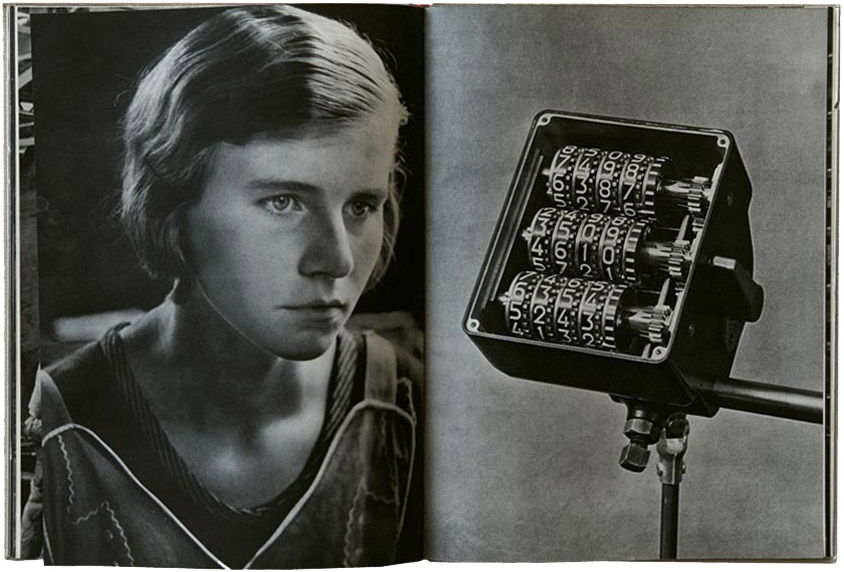
Spread from Fabrik, a photobook by Jak Tuggener, published by Rotapfel-Verlag, 1943
Source: actung-photography
Jakob Tuggener’s Swiss photobook Fabrik: Ein Bildepos der Technik (Factory: A Picture-poem on Technology) makes a small appearance in the first volume of Martin Parr and Gerry Badger’s The Photobook: A History, where they pronounce it to be ten years ahead of its time. In 1943, much of Europe was torn apart by war, though Switzerland remained neutral. Yet Fabrik, write Parr and Badger, with its images of industry, electronics and hydro-electric power, looked ahead optimistically to the bright economic future that the continent would experience in the decades after the conflict.
Printed in rotogravure, Fabrik is a book of great beauty. The black ink speckles across its tall pages like soot from a chimney. Many of the pictures that Tuggener presents without written explanation could certainly be taken as unqualified celebrations of industry. But there are dark undercurrents running through Fabrik that cast doubt on a purely positive interpretation. Towards the end comes a page showing a harshly carved wooden face, labeled “demon” in the image list. In the penultimate picture, a small, vulnerable-looking, naked doll, earlier seen balancing on the cylinder of a steam turbine, reappears surrounded by rows of artillery shells. This is juxtaposed with a portrait of a workman looking haunted—the book’s final image.
These interventions by Tuggener (1904-88), who also took promotional photographs for the company Maschinenfabrik Oerlikon, have no direct connection to industry and prompt a reassessment of the book’s intentions. In a telling pair of close-ups, a factory worker stares in the direction of a mechanical counter. By blowing up the device to equal the size of the young woman’s face, Tuggener balances the spread while transforming the machine part into an automated equivalent of the human head. The positioning of the counter in the path of her preoccupied gaze implies some ominous moment of insight or premonition. All this gives credence to the conclusion, expressed by Martin Gassner in Swiss Photobooks (2012), that Fabrik expresses not unalloyed support for industry, but a critical view that also acknowledges the ambivalent outcomes of industrial development.
Tuggener made more than 60 mock-ups for photobooks consisting of pictures and no text, but Fabrik was the only project to find a publisher. In 2012, Steidl in Germany produced a facsimile version, which follows the original in every detail, even including Tuggener’s separate blue sheet with brief picture descriptions. Fabrik is a masterly feat of subjective visual editing that flows like filmic poetry.

